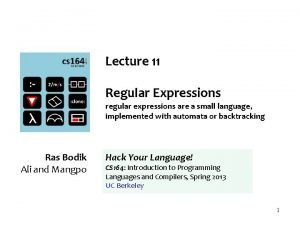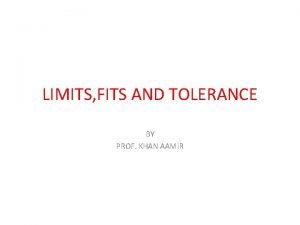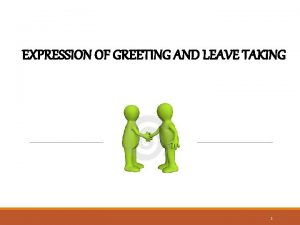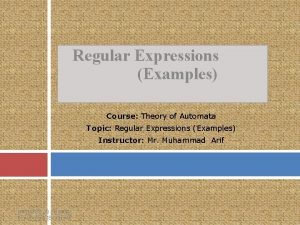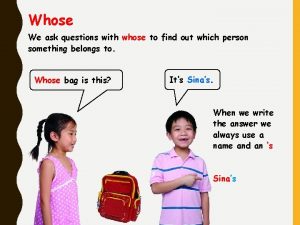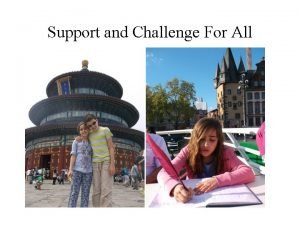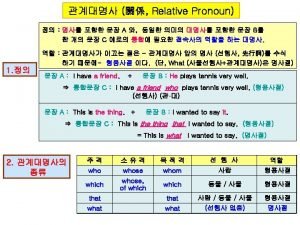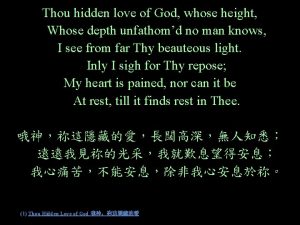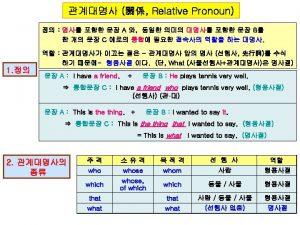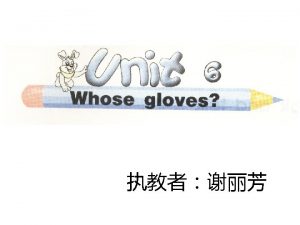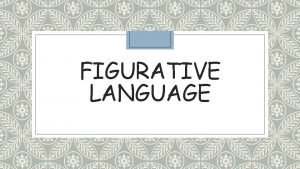a construction or expression of one language whose

























- Slides: 25



a construction or expression of one language whose parts correspond to elements in another language but whose total structure or meaning is not matched in the same way in the second language. May reference a cultural body of knowledge such as literature, which can be confusing to someone who is not steeped in that culture.

Compositeness : a type of multiword expression Institutionalization : Idiom is conventionalized expressions Semantic opacity : often non-literal

1. 2. 3. 4. 5. 6. 7. Phrasal Verbs (get away, get up, get down) Tournures (rain cats and dog) Irreversible binomials (salt and pepper, bread and butter) Phrasal Compound (blackmail, highhanded) Incorporating verbs (eavesdrop) Pseudo-idioms/ complex verb (spick and span, kith and kin) Institutionalized culturally pragmatic meaning (proverbs)

Binomials Similes Metaphors (implicit comparison) Exclamation Proverbs Phrasal Compound Noun Idioms’ Tournures

Recognizing the idiom may have no equivalent in target language May have similar counterpart in TL but its context of use may have different context /connotation

Idiom Equivalent Butterflies in stomach N Blind date Fall in love SC TL gugup Y Y Puppy love meaning Kencan buta Jatuh cinta Y Cinta monyet Heart of gold Y Berhati emas Walking on air N senang Crush on N terpikat

Idiom Equivalent SC TL meaning Red letter day Special day Feel blue sedih Good head Bisa diandalkan Hot head Mudah marah Heart of gold Berhati emas Icing on the cake Menjadikan sesuatu lebih baik Piece of cake Sangat mudah To snow menipu

1. 2. 3. 4. 5. Using an Idiom of Similar meaning and form Using an idiom of similar meaning but dissimilar form Translation by paraphrase Translation by omission Strategy of compensation ( to make up for any loss or meaning, emotional force or stylistic effect which may not be possible to reproduce directly at a given point in the target text)

The servant and the prince were like two peas in a pod even though the prince was born with a silver spoon in his mouth and the servant was born with chicken feed. The king had a very hard time with that because he was a fat cat. It was like a bolt from the blue when the prince asked the king to buy the servant new clothes,

One day I was at home and I had butterflies in my stomach. I couldn’t eat or sleep because I was going to go on a blind date with that girl that I had a crush on. Well it wasn’t exactly a blind date, I had seen her at the library, but she didn’t know who I was or what I looked like. So for her it was a blind date. The date was going to take place on Valentine’s Day and I was really feeling the pressure. I was hoping fall in love on Valentine’s Day! I hadn’t been in love since my old flame and I had parted ways last year. When I broke up with her, there was certainly no love lost between us. But right now I was walking on air because the Love bug had bitten me. I certainly hoped that this was not just puppy love.

Words collocation Incomprehensible Colloquial metaphor Habitual collocation

VARIOUS ADVERBIAL FORMS OF IDIOM 1. time and again 2. day in and day out 3. now and again 4. for now 5. for good 6. little by little 7. all at once 8. sooner or later 9. high and low 10. by and large (over and over) (day after day) (once in a while) (at the moment) (from now on) (step by step) (in a flash) (in the long run) (here and there) (as a rule) A. generally B. gradually C. temporarily D. eventually E. occasionally F. repeatedly G. continuously H. permanently I. suddenly J. everywhere

1. Situationalise the text by relating it to its environment. 2. Context of situation, including -the totality of the culture surrounding the act of text production and reception. - participants in speech events, the action taking place, other relevant feature of the situation and effect of verbal action.

In the framework of Vermeer’s theory, one of the most important factors determining the purpose of a translation is the addressee, who is the intended receiver or audience of the TT with their culture-specific worldknowledge, their expectations and their communicative needs. Every translation is directed at an intended audience, since to translate means “to produce a text in a target setting for a target purpose and target addressees in target circumstances”(1987 a: 29)

Cultural faithfulness should not be acquired at the expense of a vague broken language, resulting in miscomprehension or making little readability of the target text into sense. Therefore translator should also take domestication into consideration when employing the foreignizing strategy.

Surat dari Oslo …………………………. lalu kini, siraman air kembang dahulu, midodareni Sebelum esok menghadap penghulu. Tarub, janur, gamelan dan gending kebogiro Penganten bertemu, berlempar sirih, wijidadi, Sindur ibu, pangkon ayah, dulangan, kacarkucur Sesuai adat upacara Jawa. Aku mohon pada yang Maha Kuasa supaya terkabul semua keinginan mereka, dan …. .

Letter from Oslo …………………………. And now, the sprinkle of the water from an earthen jug Before facing God and his servant tomorrow The nuptial awning, woven palm leaves, the orchestra and wedding songs the bridal couple meets, betel leaves thrown in exchange a red sash for the bride’s mother , asking father’s blessing, the ritual exchange of food, symbol of obedience and property distributed, all in keeping with Javanese tradition I pray to the Most Power That all their wishes are granted, and after that ….

In addition to the requirements concerning the translator’s knowledge of two languages and two culture, there is one more procedural requirement that he should meet: he should try to establish the state of social interaction in which the original message was expressed and then adjusting his own expression of the message in translation to the characteristic of the social interaction in which he is involved with his audience…

Social Context (The social relationship between the original author and his audience. This relationship may have to do with such matters as age, status, and the culture’s idea of superiority and inferiority) The location ( the document must be translated for people who are unfamiliar with a certain environment) The Time (of the writing of the source document will affect the translation) Occasion Culture

1. 2. 3. 4. 5. There will be information in the source text and culture which is unknown to the speakers of the receptor language. The receptor language will have different ways of handling old versus new information within the text itself In each language there are expectancy chains. Redundancy pattern and function will not match between languages. Some implicit information load of the source language and culture will need to be made explicit in the translation.

1. Attention to detail his attention to the contextual and colocational nuances of each word and phrases he uses 2. Sensitivity to the user’s needs listens closely to the user’s special instruction. 3. Research does careful research in reference book and internet databases 4. Checking if there is any doubt, she has a translation checked by an expert

5. Versatility is versatile enough to translate text outside her area of specialization (having such work checked) 6. Promises make realistic promises 7. Friendliness friendly and helpful on the phone in person 8. Confidentiality will not disclose confidential matters learned through the process of translation 9. Hardware & Software knows how to use technology well (Douglas Robinson 1997: 12 -14)

1. 2. 3. 4. 5. 6. Please define the word of culture ! How does the culture relate to the translation work? Write some definitions of ideology! How does the ideology of a translator influence the foreignization and domestification on translated work? Please find some examples (on translated work) related to domestification and foreignization? What are the problems of culture in translation?
 A quadratic expression is an expression of
A quadratic expression is an expression of Construction of epsilon nfa from regular expression
Construction of epsilon nfa from regular expression One empire one god one emperor
One empire one god one emperor Little dog run
Little dog run One king one law one faith
One king one law one faith One empire one god one emperor
One empire one god one emperor One ford
One ford See one do one teach one
See one do one teach one See one, do one, teach one
See one, do one, teach one Structure of twelfth night
Structure of twelfth night See one do one teach one
See one do one teach one Asean tourism strategic plan
Asean tourism strategic plan One vision one identity one community
One vision one identity one community Types of fit
Types of fit One direction songs one thing
One direction songs one thing Expression greeting and leave taking
Expression greeting and leave taking Recursive definition of language in automata
Recursive definition of language in automata Regular expression of even even language
Regular expression of even even language All words
All words Gello expression language
Gello expression language Sin entered through one man
Sin entered through one man Tens 200
Tens 200 Othello act 1 scene 1
Othello act 1 scene 1 One team one fight
One team one fight One goal one passion
One goal one passion One gene one polypeptide concept
One gene one polypeptide concept

